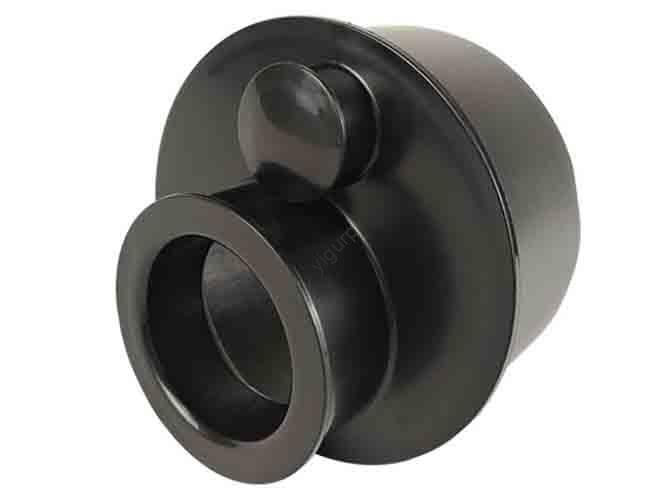When developing new products, choosing the right materials for prototype and replica parts directly affects testing accuracy, eficiencia de producción, y control de costos. This article will break down common materials, their performance comparisons, y estrategias de selección para ayudarle a tomar decisiones informadas.
1. Core Materials for Prototype & Replica Parts: Descripción general & Rasgos clave
Below is a detailed table of 7 widely used materials, including their core advantages, typical applications, and limitations—designed to let you quickly match materials to your needs.
| Nombre de material | Ventajas del núcleo | Aplicaciones típicas | Limitaciones |
| Poliuretano (PUS) | Alta fuerza, good expandability; flexible/rigid options | Soft rubber parts, ABS/PC-like replicas | Lower heat resistance than high-temp materials |
| Silicona | Excellent elasticity, Demolding fácil | Elastic components (P.EJ., juntas, empuñaduras suaves) | Low mechanical strength; not for load-bearing parts |
| Abdominales | Fuerza equilibrada & tenacidad, Procesamiento fácil | Structural prototypes (P.EJ., alojamiento, marcos) | Poor chemical resistance to strong solvents |
| PÁGINAS (Polipropileno) | Good chemical stability, resistencia al calor (~100°C) | Piezas de contacto con alimentos, componentes livianos | Low impact resistance at low temperatures |
| ordenador personal (Policarbonato) | Alta transparencia, fuerte resistencia al impacto | Partes transparentes (P.EJ., lentes, cubiertas) | Prone to scratching; higher cost than acrylic |
| Acrílico (PMMA) | Transparencia superior, easy polishing | Display prototypes (P.EJ., exhibition models) | Frágil; lower impact resistance than PC |
| Materiales resistentes a alta temperatura | Soportes >200° C; maintains performance in heat | Piezas del motor, high-temp tooling | Mayor costo; complex processing |
2. How to Compare Materials for Specific Needs? (Contrast & Decision Guide)
Not sure whether to pick PC VS. Acrílico for a transparent part, o PU vs. Silicona for a flexible component? Use these side-by-side comparisons to resolve common dilemmas.
2.1 Transparent Prototype Parts: PC VS. Acrílico
| Factor de comparación | ordenador personal (Policarbonato) | Acrílico (PMMA) |
| Transparencia | ~90% (slight blue tint) | ~92% (clearer) |
| Resistencia al impacto | Excelente (unbreakable in most cases) | Pobre (easily cracked) |
| Resistencia a las arañas | Bajo (Necesita recubrimiento) | Medio (better than PC) |
| Costo | Más alto | Más bajo |
| Recomendación | For parts needing durability (P.EJ., cubiertas de seguridad) | For display-only parts (P.EJ., model showcases) |
2.2 Flexible Prototype Parts: PU vs. Silicona
If your project requires flexibility, preguntar: Do I need strength or extreme elasticity?
- PUS: Ideal for parts that need both flexibility and structural support (P.EJ., soft rubber grips for tools). It can mimic the hardness of ABS or PC, making it versatile for functional testing.
- Silicona: Better for parts that prioritize elasticity and heat resistance (P.EJ., seals for high-temp devices). Sin embargo, its low mechanical strength means it’s not suitable for load-bearing roles.
3. 3 Key Factors to Choose the Right Material
Selecting prototype and replica materials is not about “the best material”—but the “most suitable” one. Follow this linear decision process:
- Define Performance Requirements First
Preguntar: ¿La parte estará expuesta a altas temperaturas?? Does it need transparency or flexibility? Por ejemplo:
- High-temp environments → Choose high-temperature resistant materials.
- Display purposes → Prioritize acrylic (rentable) o PC (durable).
- Balance Cost & Tiempo de entrega
- Bajo costo, fast-turnaround prototypes → ABS or PP (fácil de procesar, ampliamente disponible).
- Alto costo, specialized needs → PC or high-temperature materials (justify with critical performance demands).
- Consider Post-Processing Needs
- If you need polishing (P.EJ., partes transparentes) → Acrylic is easier to polish than PC.
- If you need painting or bonding → ABS adheres better to paints than PP.
4. La perspectiva de la tecnología de Yigu sobre la selección de materiales prototipo
En la tecnología yigu, Creemos que la selección de material para prototype and replica parts should align with “fast validation + cost optimization.” Most clients initially lean toward over-spec materials (P.EJ., choosing PC for simple display models), which increases costs unnecessarily. Our team recommends starting with a “minimum viable material”: use ABS for structural tests, acrylic for displays, and PU for flexible simulations. As the product iterates, we then upgrade to specialized materials (P.EJ., high-temperature options) only when performance demands it. This approach cuts lead time by 30% on average and reduces material costs by 20%, while still ensuring accurate prototype validation.
Preguntas frecuentes: Common Questions About Prototype & Replica Materials
- q: Can silicone be used directly as a prototype material, or only for making molds?
A: Silicone can be used directly for prototypes—especially for elastic parts like gaskets or soft covers. Sin embargo, it’s not suitable for load-bearing or high-strength applications due to its low mechanical strength.
- q: Which material is better for food-contact prototype parts: PP or ABS?
A: PP is the better choice. It has good chemical stability, is non-toxic, and meets food safety standards (P.EJ., FDA approval). Abdominales, en contraste, may release harmful substances when in contact with food or high temperatures.
- q: How do I improve the heat resistance of a prototype if I’m using PU?
A: You can add heat-resistant additives to PU during processing (P.EJ., glass fiber or ceramic fillers) to 提升 its heat resistance by 10–20°C. For parts needing >150°C resistance, sin embargo, it’s better to switch to dedicated high-temperature materials.
